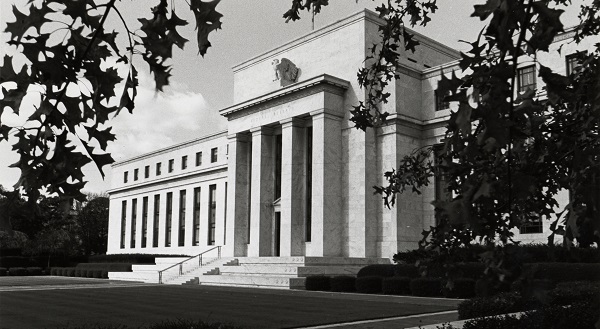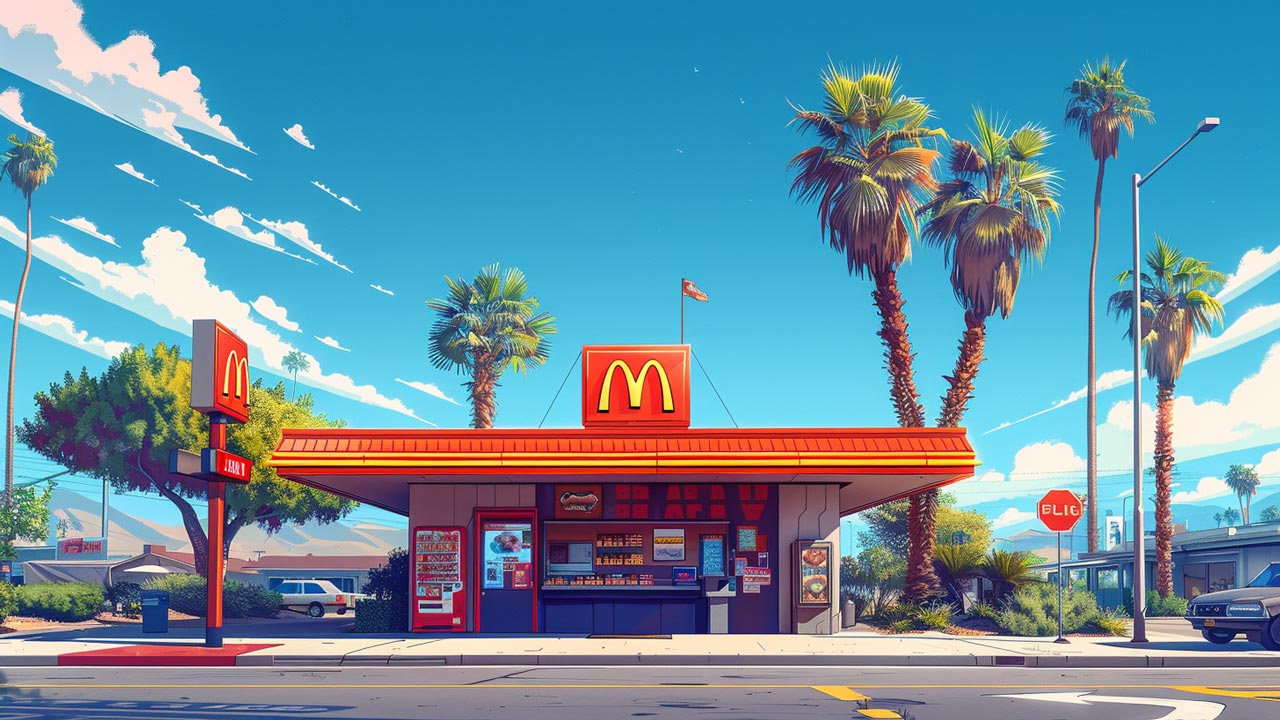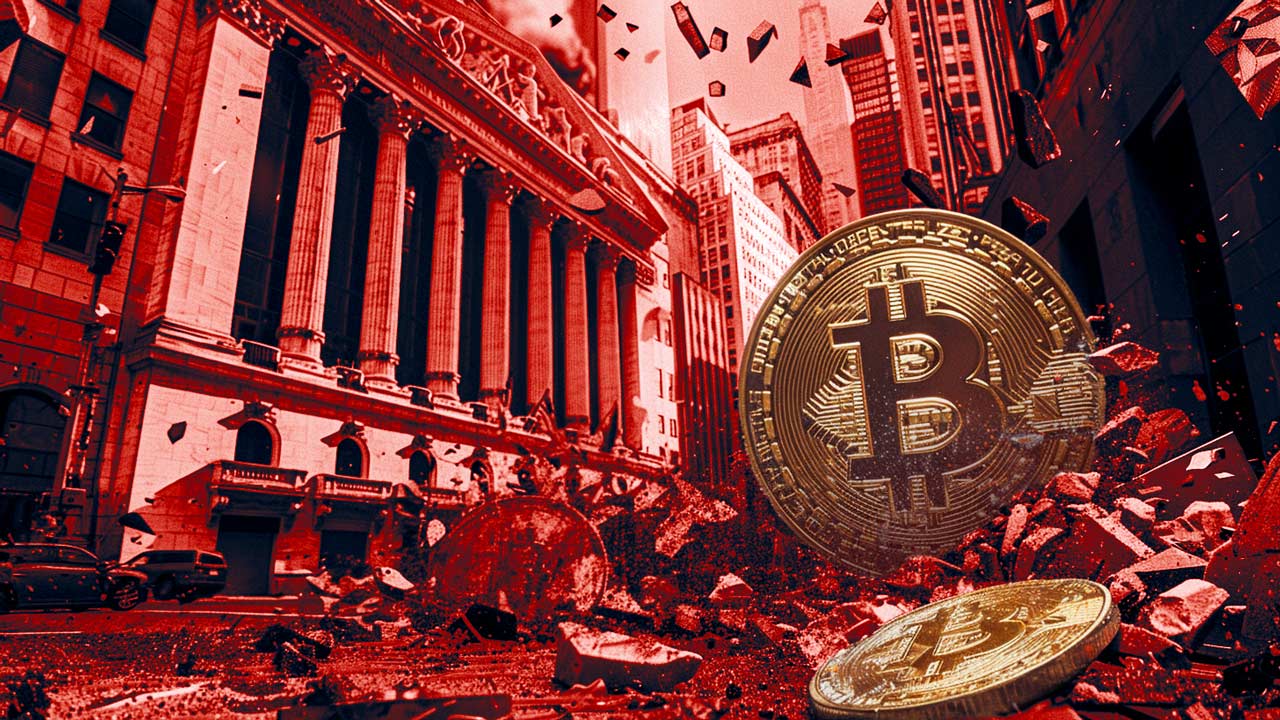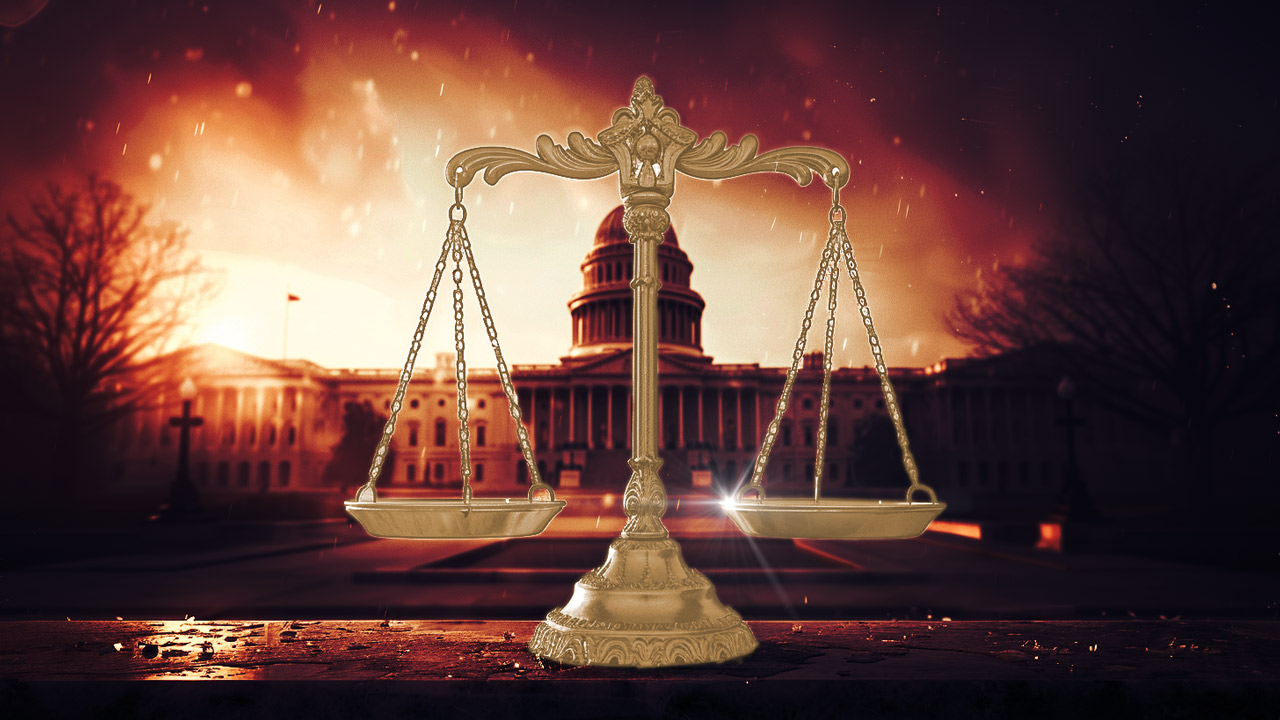Peak Irony: Fed Paper Admits Fed Policy Can Lead to Economic Ruin
A paper by Scott A. Wolla and Kaitlyn Frerking for the Federal Reserve Bank of St. Louis warns that the Fed’s own policy could lead to “economic ruin.”
The paper titled “Making Sense of National Debt” explains the pros and cons of national borrowing in typical Keynesian fashion. In a nutshell, a little debt is a good thing, but too much debt can become a problem.
But in the process of explaining national debt, Wolla and Frerking stumble into an ugly truth — Federal Reserve money printing can destroy a country’s economy.
So, when does the national debt become a problem?
According to Wolla and Frerking, debt only becomes an issue when it outpaces GDP, or national income, as they call it. If debt grows at a faster rate than income, eventually the debt might become unsustainable.
They note that according to the GAO, the US national debt is on an unsustainable path.
The federal debt is projected to grow at a faster rate than GDP for the foreseeable future. A significant portion of the growth in projected debt is to fund social programs such as Medicare and Social Security. Using debt held by the public (instead of total public debt), the debt-to-GDP ratio averaged 46 percent from 1946 to 2018 but reached 77 percent by the end of 2018. It is projected to exceed 100 percent within 20 years.”
Note that the total public debt is even higher. Most analysts put the total debt to GDP ratio at around 105%.
As Wolla and Frerking point out, rising levels of debt elevate the risk of default. Normally, investors holding government bonds bear this risk. While governments never have to entirely pay off debt, there are debt levels that investors might perceive as unsustainable.
Enter the central bank. Wolla and Frerking explain how it can step in and “print money” in an effort to rescue the overleveraged government.
While governments never have to entirely pay off debt, there are debt levels that investors might perceive as unsustainable. A solution some countries with high levels of unsustainable debt have tried is printing money. In this scenario, the government borrows money by issuing bonds and then orders the central bank to buy those bonds by creating (printing) money. History has taught us, however, that this type of policy leads to extremely high rates of inflation (hyperinflation) and often ends in economic ruin.”
The process that Wolla and Frerking describe is called debt monetization. And it’s exactly what the Federal Reserve is doing today.
Last month, the Fed announced a massive bond-buying program.
The Federal Reserve will buy $60 billion in short-term Treasury bills each month. According to a statement, the purchases will continue, “at least into the second quarter of next year.” That would amount to around $400 billion worth of Treasurys added to the Fed’s balance sheet.
But the balance sheet will likely expand more than that. The Fed also plans to use interest it earns off its portfolio to buy more Treasurys. And as they mature, it will take that money and buy more bonds, thus pumping up the balance sheet.
Powell insists this is not quantitative easing. When he announced the plan, Powell said, “This is not QE. In no sense is this QE.” But as Peter Schiff said, this is precisely QE – no matter what you call it.
In effect, QE is a fancy term for printing lots of money. The Fed doesn’t literally have a printing press in the basement of the Eccles Building running off dollar bills, but it generates the same practical effect. The Federal Reserve digitally creates money out of thin air and uses the new dollars to buy securities and government bonds, thereby putting “cash” directly into circulation. QE not only boosts the amount of money in the economy; it also has a secondary function. As the Federal Reserve buys US Treasury bonds, it monetizes government debt.
We’ve seen this song and dance before. The Federal Reserve ran three rounds of quantitative easing in the wake of the 2008 Financial Crisis.
When then-Fed-chair Ben Bernanke launched QE, he insisted the Fed was not monetizing debt. He said the difference between debt monetization and the Fed’s policy was that the central bank was not providing a permanent source of financing. He said the Treasurys would only remain on the Fed’s balance sheet temporarily. He assured Congress that once the crisis was over, the Federal Reserve would sell the bonds it bought during the emergency.
That didn’t happen. And now we’re back to QE. In fact, the Fed balance sheet is currently expanding faster than it did during the rounds of QE after the great recession.
Wolla and Frerking assure us everything will be fine here in the US. We don’t have to worry about hyperinflation because we have an “independent” central bank.
You can decide for yourself whether you believe in this mythical Fed independence. Regardless, the central bank can only fool markets for so long. Ultimately, the national debt depends on investor willingness to buy government bonds. Peter said he doesn’t believe the Fed will be able to pull off the ruse again. Investors may expect QE4 to be like QE3, but there’s a big difference.
You see, when the Fed did QE3, investors were still foolish enough to believe that that was the last time they were going to do it. They actually bought the Fed when the Fed said they had an exit strategy, they were going to shrink their balance sheet; they were going to normalize interest rates. The markets were looking forward to that and they thought that what the Fed was doing was working. But it didn’t work. It was an abject failure. That’s why they’re doing it again. But soon the markets are going to discover that QE is permanent and that there’s never going to be a real reduction in the balance sheet. The balance sheet is going to grow into perpetuity and I think we’re going to have a dollar crisis. I think we’re going to have a sovereign debt crisis. I think this is going to end very poorly for people who have been enjoying the paper gains in this stock market bubble.”





 The solution to a problem shouldn’t make the problem worse. But apparently, California’s policy makers missed that memo. On April 1st, the state instituted a $20 minimum wage for fast food workers, the highest in the US. With California’s absurdly high cost of living, the policy appeared to make life more manageable for low-income residents. Unfortunately, as the adage goes, “If it sounds too […]
The solution to a problem shouldn’t make the problem worse. But apparently, California’s policy makers missed that memo. On April 1st, the state instituted a $20 minimum wage for fast food workers, the highest in the US. With California’s absurdly high cost of living, the policy appeared to make life more manageable for low-income residents. Unfortunately, as the adage goes, “If it sounds too […] The monetary battle of the 20th century was gold vs. fiat. But the monetary battle of the 21st century will be gold vs. bitcoin. With Wall Street jumping into the game with bitcoin ETFs, a bitcoin halving recently splitting the block reward for miners in half, and both gold and bitcoin hovering near their all-time highs, it’s a great time for […]
The monetary battle of the 20th century was gold vs. fiat. But the monetary battle of the 21st century will be gold vs. bitcoin. With Wall Street jumping into the game with bitcoin ETFs, a bitcoin halving recently splitting the block reward for miners in half, and both gold and bitcoin hovering near their all-time highs, it’s a great time for […] What is Nvidia? If you’re a committed gamer the question may sound like nonsense. Nvidia, which was founded in 1993, is a tech company that makes GPUs and other products. It originally specialized in making products for the video game industry, that assisted in 3D rendering. If you were a committed gamer, you probably owned their products. If you weren’t, you might not have heard of them.
What is Nvidia? If you’re a committed gamer the question may sound like nonsense. Nvidia, which was founded in 1993, is a tech company that makes GPUs and other products. It originally specialized in making products for the video game industry, that assisted in 3D rendering. If you were a committed gamer, you probably owned their products. If you weren’t, you might not have heard of them. With the AI boom and green energy push fueling fresh copper demand, and with copper mines aging and not enough projects to match demand with supply, the forecasted copper shortage has finally arrived in earnest. Coupled with persistently high inflation in the US, EU, and elsewhere, I predict the industrial metal will surpass its 2022 top to reach a […]
With the AI boom and green energy push fueling fresh copper demand, and with copper mines aging and not enough projects to match demand with supply, the forecasted copper shortage has finally arrived in earnest. Coupled with persistently high inflation in the US, EU, and elsewhere, I predict the industrial metal will surpass its 2022 top to reach a […] America’s trust in its institutions has rapidly eroded over the past 20 years. We have a lower level of trust in our judicial system and elections than most European countries. Some of this is natural, as Americans are uniquely individualistic, but much of it arises from repeated government failures.
America’s trust in its institutions has rapidly eroded over the past 20 years. We have a lower level of trust in our judicial system and elections than most European countries. Some of this is natural, as Americans are uniquely individualistic, but much of it arises from repeated government failures.